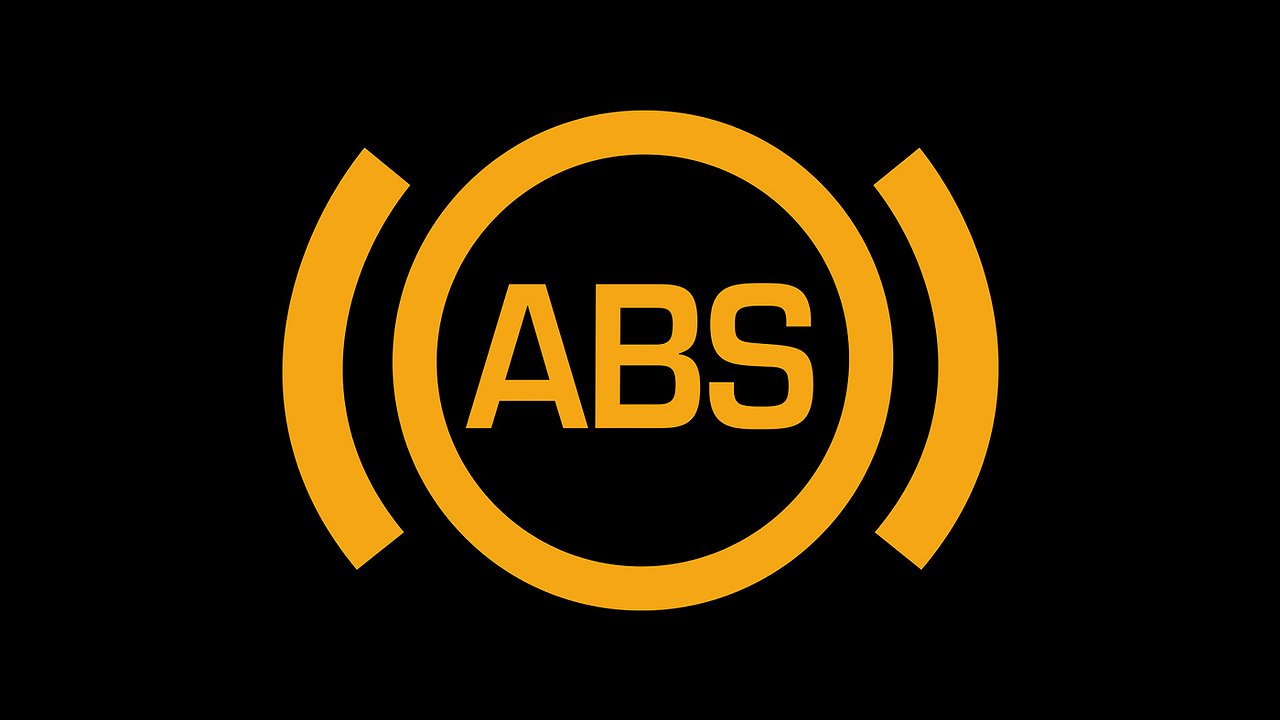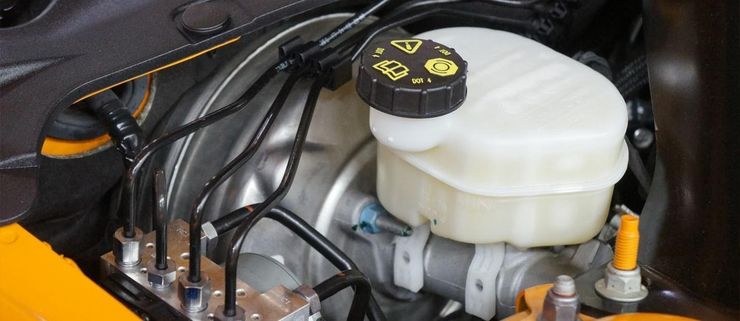If a warning light on the car’s dashboard does not go out shortly after starting the engine, there is a problem. With the exception of the ‘handbrake’ icon, of course, in the event that the car is ‘on the handbrake’. We will tell you what to be afraid of if the abbreviation ABS refuses to fade before the driver’s eyes.
When everything is in order with the anti-lock braking system, the indicator on the dashboard showing its condition lights up only a few seconds after starting the engine and then goes out. And it no longer reminds you of its existence until the next time you turn on the engine. But sometimes it happens that the “light bulb” categorically refuses to go out. Problems with ABS are no joke as it determines how the car behaves when braking.
The role of this system is especially critical on slippery surfaces, when it allows the driver to maintain control of a slowing vehicle. By the way, there is nothing complicated in it: rotational speed sensors for each wheel, a hydraulic unit included in the circuits of the braking system and simple electronic “brains” for managing all this equipment. Well, that same “ABS light” on the side.
If it doesn’t turn off, it’s a sign of a problem in one of the nodes mentioned above. However, if you see such a disgrace, you should not immediately rush headlong to a car service center. First… go to the car wash! Maybe it’s just a matter of wheel sensors clogged with dirt and ‘bath procedures’ can free them. If the “light” remains on after washing, it makes sense to perform a test to determine the actual performance of the system.
On an empty and straight road (ideally on wet or snowy asphalt) we accelerate to 40-50 km/h and press the brake pedal until the car comes to a complete stop. At the same time, the working ABS touches your foot with a pedal and slows down the car without changing course. Any other behavior can safely be considered a crime and is confirmation that the system is not working.
Please note that in some cars the “ABS light” may come on if the wheel bearing is defective. Therefore, it is worth listening if you can hear a characteristic howl from one of the wheels.
To be completely sure that the anti-lock braking function has failed and a visit to the gas station is necessary, you need to perform a few more manipulations under the hood of the car. First make sure that everything is in order with the fuse responsible for the ABS. And secondly, check the electronic system control unit: is there moisture on or in it? It almost always causes “malfunctions” in any electrical system. Ideally, it makes sense to jack up the car and inspect the ABS sensors on the wheels. Or rather: the wiring connected to it. One of them may rot or break.
If the system components, even viewed from below, do not cause any complaints and the ‘light’ on the dashboard remains on, there is no other option than to go to the service center. There they will quickly determine the cause of the problem using a diagnostic scanner.
When everything is in order with the anti-lock braking system, the indicator on the dashboard showing its condition lights up only a few seconds after starting the engine and then goes out. And it no longer reminds you of its existence until the next time you turn on the engine. But sometimes it happens that the “light bulb” categorically refuses to go out. Problems with ABS are no joke as it determines how the car behaves when braking.
The role of this system is especially critical on slippery surfaces, when it allows the driver to maintain control of a slowing vehicle. By the way, there is nothing complicated in it: rotational speed sensors for each wheel, a hydraulic unit included in the circuits of the braking system and simple electronic “brains” for controlling all this equipment. Well, that same “ABS light” on the side.
If it doesn’t turn off, it’s a sign of a problem in one of the nodes mentioned above. However, if you see such a disgrace, you should not immediately rush headlong to a car service center. First… go to the car wash! Maybe it’s just a matter of wheel sensors clogged with dirt and ‘bath procedures’ can free them. If the “light” remains on after washing, it makes sense to perform a test to determine the actual performance of the system.
On an empty and straight road (ideally on wet or snowy asphalt) we accelerate to 40-50 km/h and press the brake pedal until the car comes to a complete stop. At the same time, the working ABS touches your foot with a pedal and slows down the car without changing course. Any other behavior can safely be considered a crime and is confirmation that the system is not working.
Please note that in some cars the “ABS light” may come on if the wheel bearing is defective. Therefore, it is worth listening if you can hear a characteristic howl from one of the wheels.
To be completely sure that the anti-lock braking function has failed and a visit to the gas station is necessary, you need to perform a few more manipulations under the hood of the car. First make sure that everything is in order with the fuse responsible for the ABS. And secondly, check the electronic system control unit: is there moisture on or in it? It almost always causes “malfunctions” in any electrical system. Ideally, it makes sense to jack up the car and inspect the ABS sensors on the wheels. Or rather: the wiring connected to it. One of them may rot or break.
If the system components, even viewed from below, do not cause any complaints and the ‘light’ on the dashboard remains on, there is no other option than to go to the service center. There they will quickly determine the cause of the problem using a diagnostic scanner.
Source: Avto Vzglyad
Donald Salinas is an experienced automobile journalist and writer for Div Bracket. He brings his readers the latest news and developments from the world of automobiles, offering a unique and knowledgeable perspective on the latest trends and innovations in the automotive industry.














